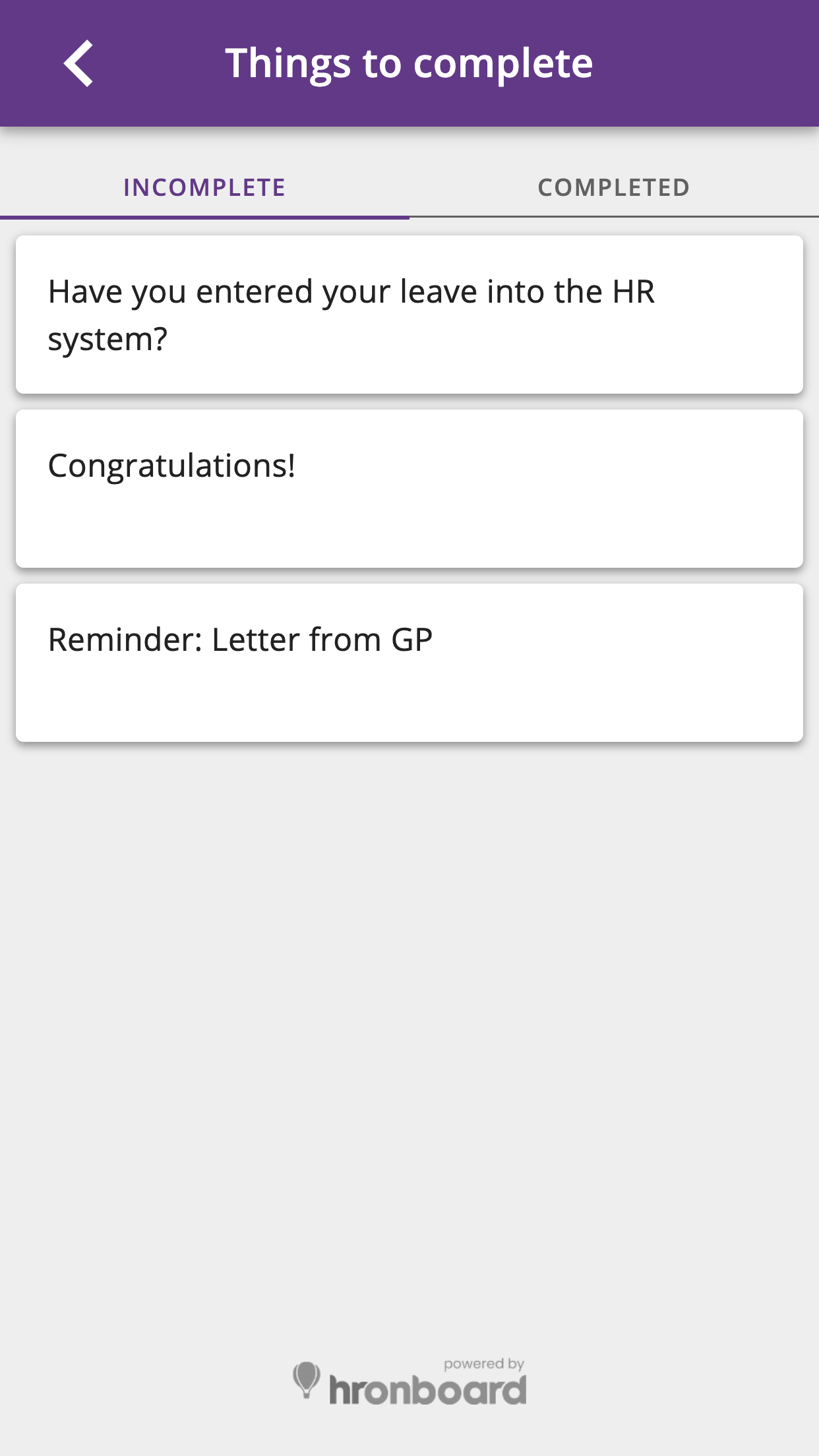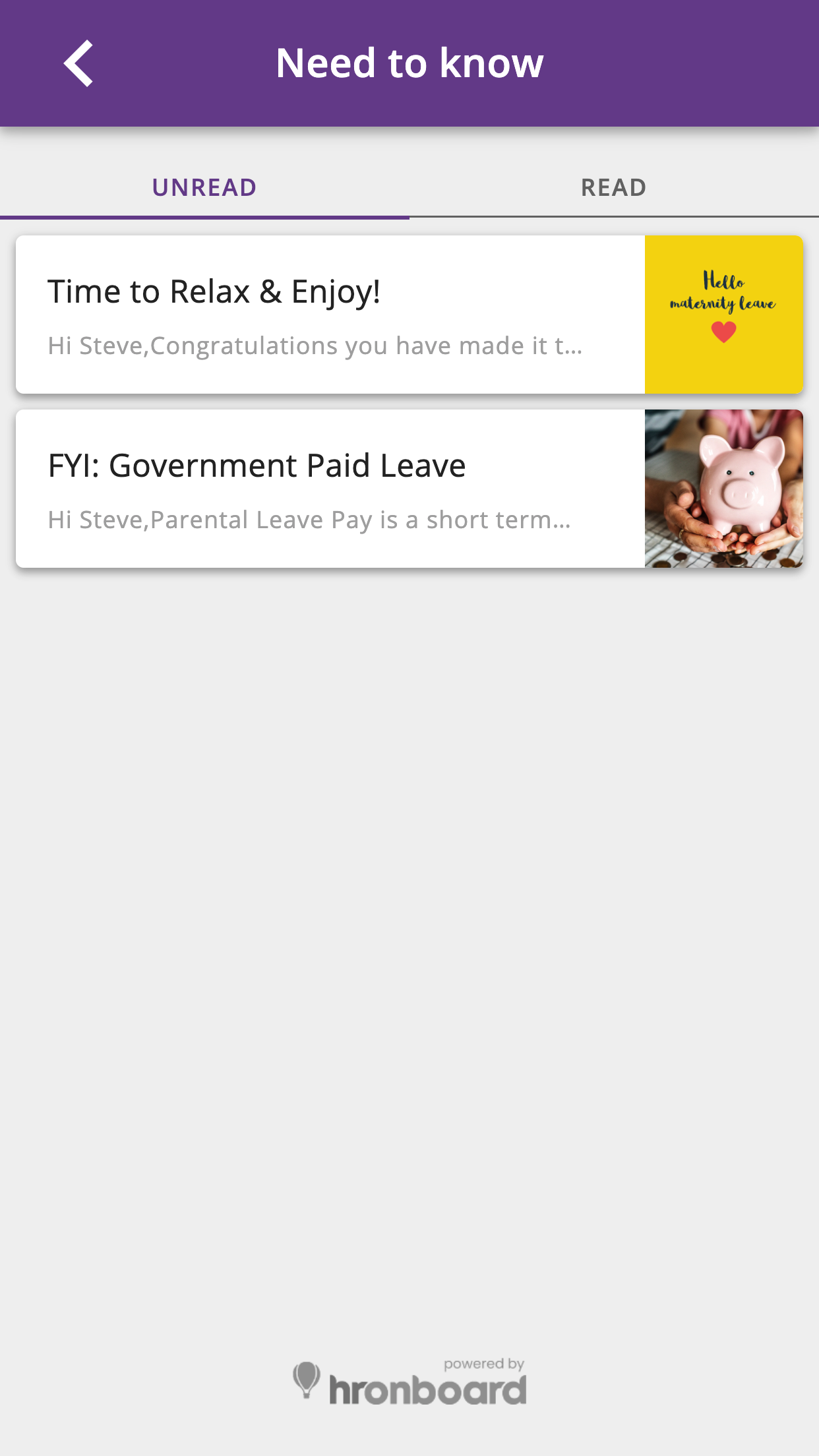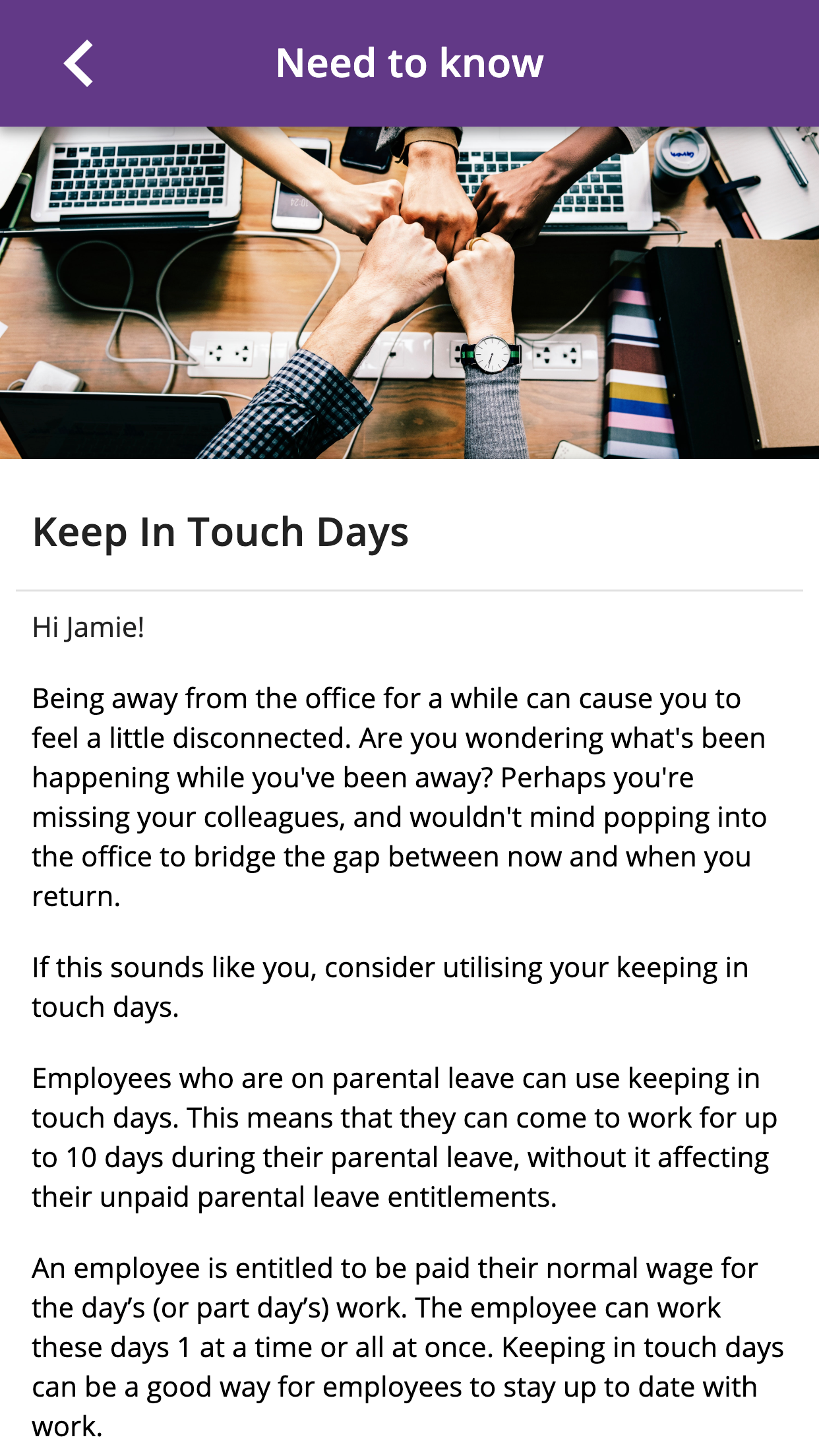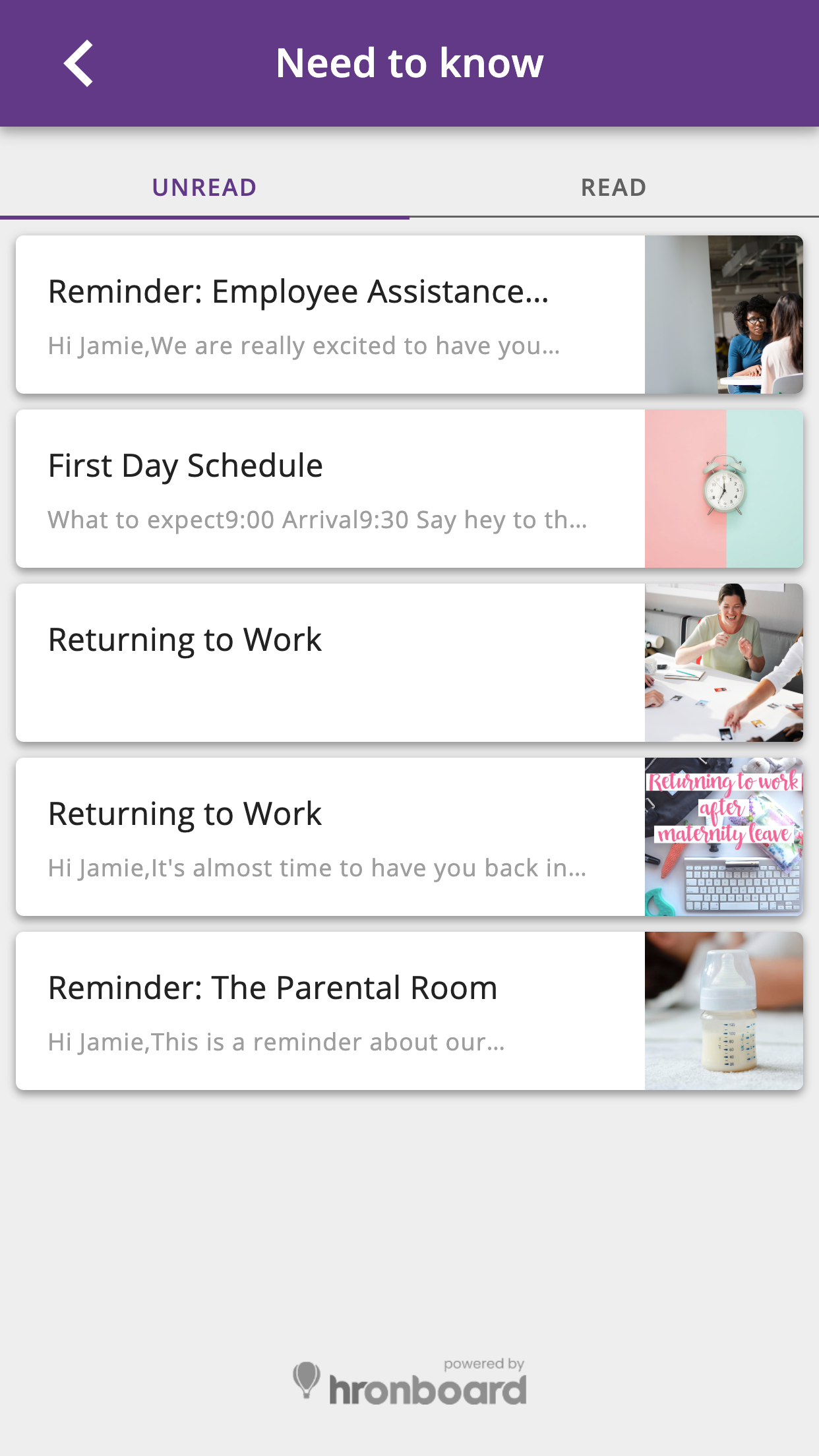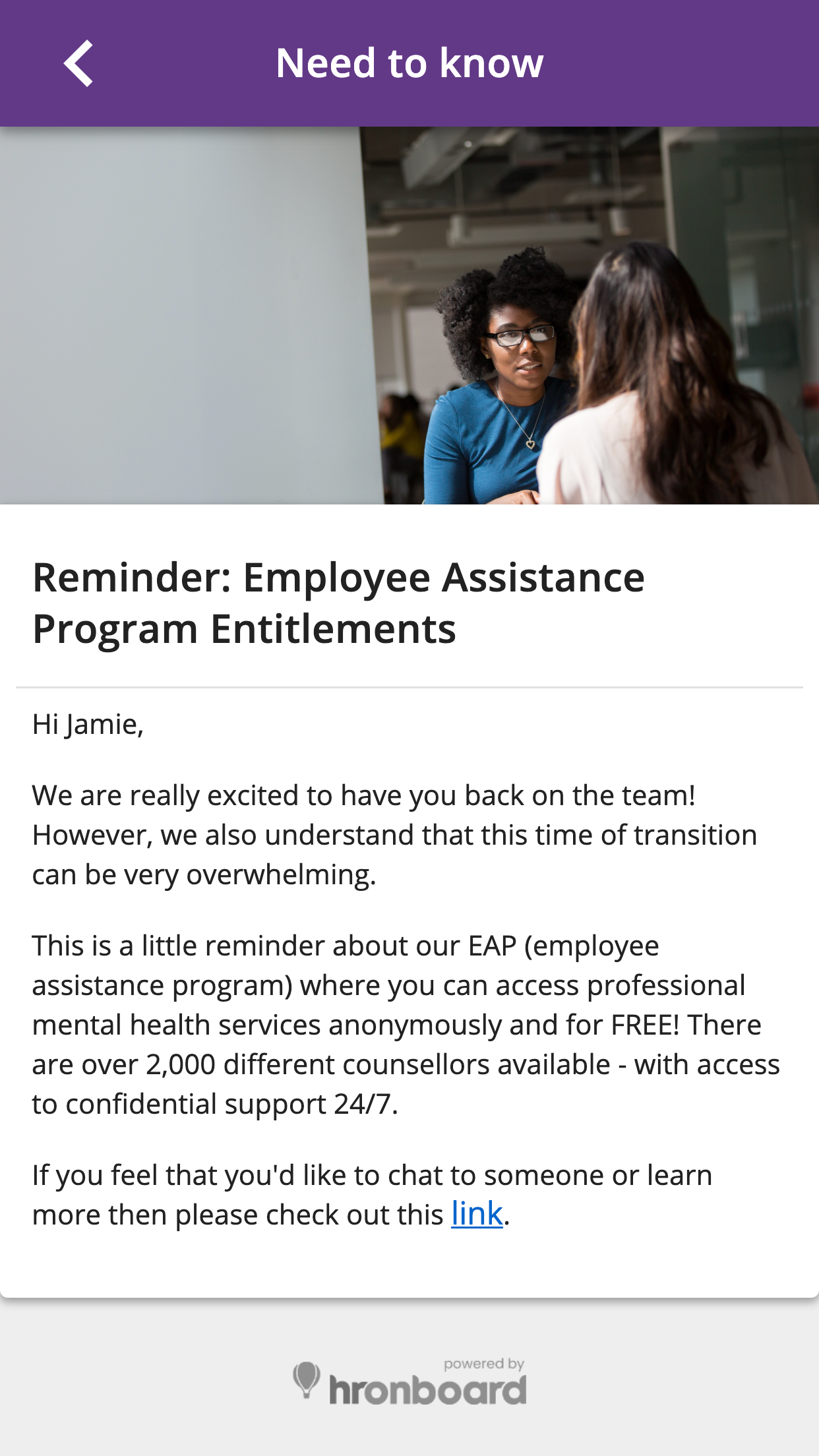
We’ve curated an epic amount of advice and best practice ideas to help create an epic first impression with your new starters.
But what about the returning or soon to be parents in the workforce?
Parental leave tends to be that awkward topic of conversation and ‘grey’ area of provisioning. And like all other employment transitions, we’re passionate about treating your existing employees with the same care and consideration as your new starters.
In a way, parental leave can be seen as a reboarding journey; from the start of parental leave (de-provisioning) up till they return to the workforce (re-onboarding). In this age, the reality is that for the majority of employees this is a once – or twice-in-a-lifetime event that companies can support and prepare for.
“The reality is that these are (in most cases), once or twice-in-a-lifetime events, and events we have time to prepare for”
Source
Why should companies care?
The answer is simple really – when your employees are happy, you retain your talent longer. Whether it’s your casual staff, full-timers, returning mothers or executives…losing those employees costs business serious coin.
Becoming a parent is a time of significant change that can have a big impact on the workplace; so adequate attention should be placed on supporting these employees.
Here are some statistics according to the Australian Human Rights Commission
- 27% of women reported experiencing discrimination during pregnancy
- 32% experienced discrimination when applying for parental leave
- 35% reported discrimination when returning back to work (34% related to family responsibilities and 8% related to breast-feeding or expressing)
So how exactly do you engage returning or soon to be parents with a personalised communications plan for parental leave?
1. Don’t set up false expectations
Many talented employees are instilled with false hope that they will come back to a work environment with ‘same clients’, same pay and career stability. Rather than promising anything – have a genuine conversation.
Make sure your employees understand the key changes that can be expected during this time. Being clear on these potential career plans will relieve a lot of stress and frustration incurred by new parents.
2. Plan out your communication
Communication is key to setting any employee up for success. Misunderstandings or communication breakdowns are where hostility and discomfort in the workplace evolves. A digital onboarding platform can be extremely valuable in complementing spoken words with further detail for employees to digest and return with questions. Communication can be enhanced through a digital automated workflow by drip-feeding crucial content before, throughout and after parental leave.
Your aim should be to keep employees engaged throughout their parental leave and avoid any misunderstandings during this time.
3. Get the basics right
You would be surprised how many times we hear it – it tends to be the most simple tasks that get forgotten.
The emotional impact of this mis-steps can be huge. Re-provisioning correctly is essential to enabling your employees to transition back to work smoothly.
Not having the correct contracts, written leave entitlements, key-dates or re-provisioning expectations only leads to unnecessary anxiety. For an expecting or new parent, worrying about the paperwork is the last thing they want.
Having a digital platform such as HROnboard gives assurance to team leaders that they can follow all templates and prompts to create an amazing experience for their team members. All these simple tasks can also be automated through HROnboard for peace of mind for all involved.
What does an engaged and functional parental leave journey look like?
Here are some examples of a parental leave journey from pre-leave up until returning to the workplace.
Before Parental Leave
- Set key HR task reminders to employee for completion
- Drip-feed key content to reinforce important information such as government paid initiatives, entitlements or a personalised message wishing the safe arrival of their new family member
During Parental Leave
- After a suitable amount of time, share pieces of content to keep your employee engaged – this could be ‘return to work’ information or advice, tips or company support groups
Before Their ‘Return to Work’ First Day
- Ease your employees nerves before returning to the workforce with helpful advice and tips
- Remind employees about any health / wellbeing initiatives you offer
- Send them a personalised first day schedule to create some structure and easy any jitters
- Lay out all information about any parental rooms for breast-feeding or flexible work arrangement policies
Be proud, make parental offerings a part of your brand and employer value proposition (EVP)
Lastly, be proud of your parental offerings.
Entitlements surrounding parental leave have become some of the most attractive features of companies. Show off your awesome parental or flexibility initiatives off as a part of your brand – sit back and be amazed at the talent you attract!
Here are some companies taking the stage:
- Paypal – 16 week paid training bootcamp to help specialists transition back into their role
- Vodafone – use multiple tech tools to help create a flexible workplace
- Telstra – 16 weeks paid parental leave for both primary or secondary parents
- PWC – 18 weeks paid leave with health and fitness perks
- ANZ – 12 weeks paid leave with the flexibility of taking paid and non-paid leave for up to 2 years, and childcare benefits
Inspired by the possibility of keeping your parental leave employees engaged throughout their journey – why not take a few moments to try our savvy onboarding experience for yourself?

